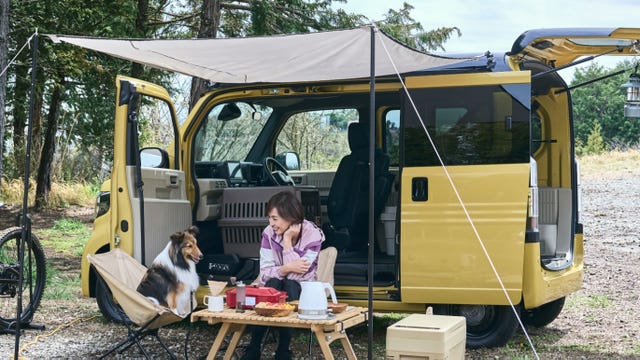Honda has introduced its new lineup of N-VAN e: battery-electric vans, specifically designed for the Japanese market. These compact electric vehicles offer a range of 152 miles according to the WLTC cycle and are available in various configurations, including one to four seats. The N-VAN e: series is primarily aimed at commercial customers, although some versions will cater to private buyers seeking vehicles for leisure activities.
Key Features and Pricing
The base model, e: G, starts at approximately $15,500 in Japan and is designed for deliveries and commercial use. A four-seat version called e: FUN, targeted at private buyers and leisure activities, is priced at around $18,600. Honda has optimized the design by placing the battery underneath the floor, creating additional space inside the vehicle compared to its gas-powered counterpart.
Design and Capabilities
The N-VAN e: boasts a high ceiling and flat floor, making it suitable for various uses, including camping and biking. The van is equipped with a comprehensive list of Honda Sensing safety systems, including pedestrian collision mitigation steering, adaptive cruise control, and side curtain airbags. Notably, it features a Post-Collision Braking System, a first among Japan’s mini-vehicle models.
Charging and Performance
The vehicle can be fully charged in four and a half hours using a 6 kW charger or in about 30 minutes with a 50-kW charger. Additionally, the N-VAN e: has the capability to power external electric appliances, making it suitable for outdoor activities.

Market Availability
While the N-VAN e: is not slated for release in North America, it provides insight into the types of electric vehicles being developed for other markets. Honda’s focus on compact, practical EVs highlights the diverse approaches being taken in the global automotive industry.
The N-VAN e: lineup demonstrates Honda’s commitment to expanding its electric vehicle offerings, particularly in the commercial sector. As the global demand for eco-friendly transportation solutions continues to grow, vehicles like the N-VAN e: are likely to play a significant role in shaping the future of urban mobility.



